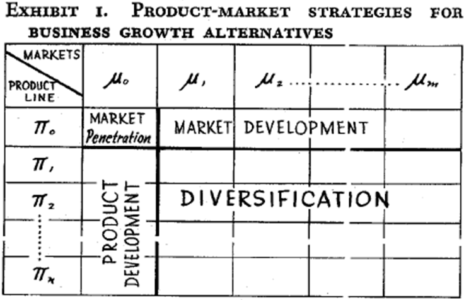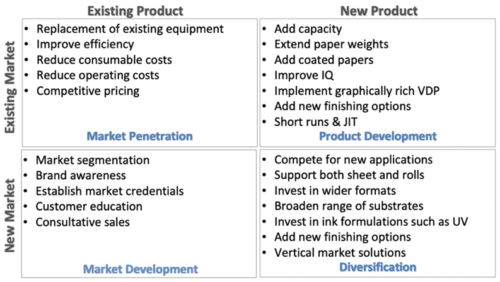In 1993, Scitex purchased the Dayton Operations division of Kodak. In addition to it’s imprinting solutions, the company blazed the trail for complete inkjet press solutions and sold the business back to Kodak in 2004, which renamed the business after the flagship Versamark press. A lot has changed in those 25 years and today there are many companies offering production inkjet products designed for a broad range of environments, substrates, applications and production volumes. Inkjet Insight’s Device Finder tracks over 25 of these manufacturers and 172 products (including their variants) from light production sheet-fed to ultra-high volume continuous-feed.
Students of printing industry history know how quickly the industry has evolved and can recite the products and technologies that rose to fame and are no longer available. Waves of technological change can be exciting and offer an advantage in a hyper competitive market, however there are often winners and losers and a poor decision can endanger a business. This highlights the importance of strategic planning when evaluating equipment purchases.
One of our favorite planning tools is the product-market matrix by Igor Ansoff which was first published in Harvard Business Review in 1957. Ansoff compared scenarios for both product and market decisions and grouped them into four major categories; market penetration, market development, product development and diversification. Each requires a different game plan and has its own risks and rewards.
 Ansoff, Igor. Strategies for Diversification. Harvard Business Review: 1957
Ansoff, Igor. Strategies for Diversification. Harvard Business Review: 1957
The modern Ansoff is simplified to the four quadrants mentioned earlier. They are aligned to both product and market strategy … either existing or new product, or existing or new markets. We looked at these quadrants from the perspective of a print service provider who is either considering or has adopted inkjet for their operations.
 Inkjet Insight Ansoff Product-Market Matrix
Inkjet Insight Ansoff Product-Market Matrix
Market Penetration. Market penetration is where you take your existing product and work to increase your business within your existing market. This relies heavily on sales and marketing execution while also driving operational efficiencies to ensure profitability. From an investment perspective, equipment should be considered that replaces existing capacity and is capable of meeting the quality requirements for jobs typically produced for your customers’ applications and offers a cost advantage to how work is currently produced.
Market Development. Market development is taking your existing product and introducing it to a new market. It requires building market knowledge, establishing credentials, and creating awareness. This is more difficult than market penetration because you may not be known to the new market segment and there is most certainly entrenched competition that will be difficult to unseat. Market development requires an investment in people, time and patience that is hard for many companies to justify. The economics and streamlined efficiency of inkjet printing may be disruptive to those established relationships.
Product Development. Product development is creating new product for your existing customers and market. This is often looked at as growing customer share by offering more capabilities. The inkjet market is rapidly evolving with new product capabilities that more fully satisfy the needs of many of the market segments. This includes the ability to print on a broader range of substrates, the use of coated papers, improved image quality, workflows for graphically rich variable data printing, and finishing options for greater flexibility.
Being able to produce a broader range of jobs for customers means that they don’t have to source their work from competitors. However, there is a risk to investing in new capabilities, especially if new business doesn’t materialize. Most print providers have a good sense for what is needed to grow customer share, but it’s helpful to have a formalized process to capture customer input to help quantify the benefit to new investments. It is also helpful to engage key customers during paper and print quality testing on prospective equipment.
Diversification. Diversification is creating new product for new markets. This approach offers the greatest potential return on investment but also carries the greatest risk. This may be a print provider who wants to get into a new application space that is an unproven niche but offers potential growth opportunities. However, it would most likely require investment in new equipment, development of vertical market solutions, and all the market development activities mentioned earlier. It’s the long game with the highest costs. From an equipment perspective, there are a number of exiting new developments that make this possible. These include new sheet-fed options, wider formats, new ink formulations such as UV, and a broader range of substrates.
In Practice. The Ansoff product-market matrix is a brainstorming and planning tool to help uncover opportunity and develop ideas on the path forward. There are other models and approaches, but the underlying purpose is to think about what the best approach is to grow your business. Another useful tool is a SWOT diagram. Often, companies will uncover a disconnect between aspirations and the realities of their capabilities and market forces. This is where poor investment decisions can hurt a business and why Inkjet Insight advocates for formal strategic planning activities prior to the acquisition of new printing equipment.
We are Here to Help. Our site is all about helping make great equipment acquisition decisions and getting the most out of the investments. Our Knowledge Base has articles on strategic developments from equipment manufacturers, new product capabilities, the economics of inkjet printing and maximizing print quality. As mentioned earlier, we also have a significant database of devices that are available on the market. The Device Finder can be searched base on manufacturer, application segments, or technology requirements. Many of the listings have videos and case studies so you can see how the equipment is being used in the field. We also have a number of checklists available to premium members which can help you evaluate your operation and requirements for new equipment. Finally, our team of consultants are available to assist you along your journey. We can help with a range of consulting activities from print quality analysis to strategic planning. Don’t hesitate to engage us with your questions. It’s how we learn, develop new ideas for content, and help you address your most pressing needs.
